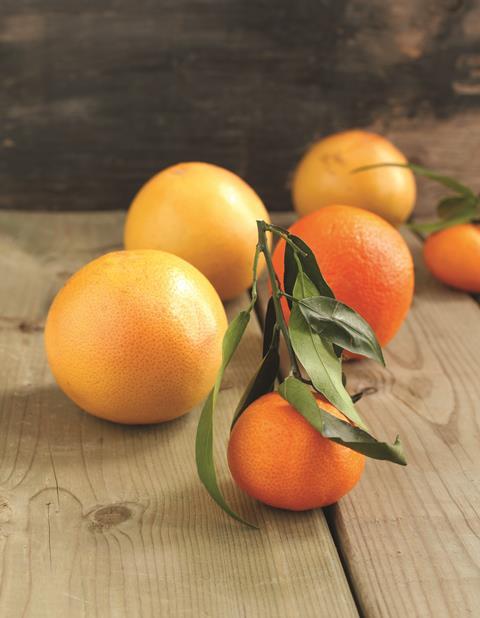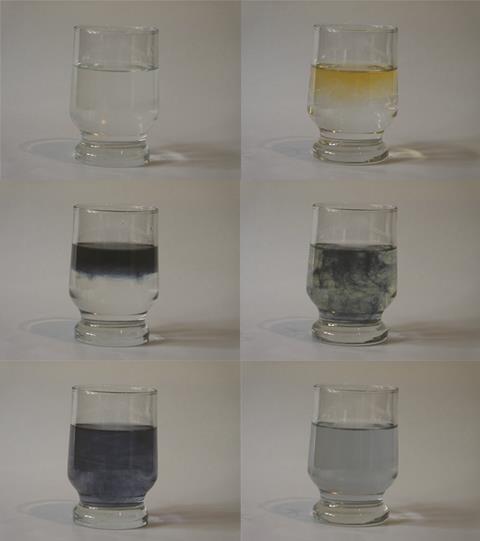In this article from our ‘Avogadro’s lab’ series, Stephen Ashworth asks ‘how much vitamin C is in your orange?’

We all need vitamin C to stay healthy: it is a vital nutrient. Without enough vitamin C humans develop a disease known as scurvy. Along with some other animals, we have to eat foods containing vitamin C as we can’t synthesise it in our bodies.
Scurvy used to be a deadly disease for sailors and soldiers, who often had to go for long periods without fresh fruit and vegetables. One symptom of scurvy is spongy and bleeding gums. This happens because vitamin C is required for the body to make collagen, which is an important component of connective tissue. The navy found that lime juice added to rum and water (grog) kept sailors healthy and is why the English are sometimes referred to as Limeys.
Many fresh fruits and vegetables contain vitamin C. Citrus fruits, such as oranges and lemons, are especially good sources. Vitamin C may also be added to processed food as a supplement.
Ascorbic acid
Vitamin C refers to L-ascorbic acid or one of its oxidised forms. Any of these have the biological effect of vitamin C.
Ascorbic acid itself does not just have activity as a vitamin, it is also an antioxidant. The term oxidation originally referred specifically to a reaction that combined something with oxygen. However it now has a much wider meaning. If one reactant is oxidised another must be reduced, to balance out the transfer of electrons. These types of reactions are known as redox (REDuction–OXidation) reactions. An antioxidant (or reducing agent) is used to reduce another reactant while being oxidised itself (a bit like a see-saw: if one end goes up the other must come down). We can use this property of ascorbic acid to measure how much we have in a solution.
Did you know?
In 1937 Norman Haworth was awarded the Nobel prize for chemistry for determining the structure of ascorbic acid. In the same year the Nobel prize for physiology or medicine went to Albert von Szent-Györgyi Nagyrápolt for his work on understanding the biological functions of ascorbic acid.

Try it yourself
Ascorbic acid reduces iodine to iodide ions, and in the process it is oxidised to dehydroascorbic acid. We can show that elemental iodine is present in solution by using starch to give a characteristic blue–black colour. An easy way to make a solution of starch is to add some boiling water to a little cornflour. Some starch dissolves and the liquid will become slightly cloudy.
Take about 250 cm3 of water. Using an eye dropper or pipette, add a few drops (five should be enough) of tincture of iodine (you can buy this from a pharmacy) and a few drops of starch – the solution should become blue–black. Using a clean eye dropper or pipette add some orange juice to this solution and count the drops until the dark colour disappears.
One molecule of ascorbic acid converts one molecule of iodine into two iodide ions. When all the iodine has been reduced to iodide the solution loses its blue–black colour. If the same amount of tincture of iodine is used for each experiment, the amount of vitamin C in a variety of liquids may be compared. It is also possible to calibrate your solutions by using an effervescent vitamin C tablet dissolved in a known quantity (eg 1 litre) of water.
Be aware that tincture of iodine is for external use only and may stain. Also, be aware that ascorbic acid will slowly react with oxygen in the air and lose its reducing properties – one reason to eat your fruit and vegetables when they are as fresh as possible.
Additional information
This article originally appeared in The Mole, the student magazine published by the Royal Society of Chemistry from 2012 to 2015.









No comments yet